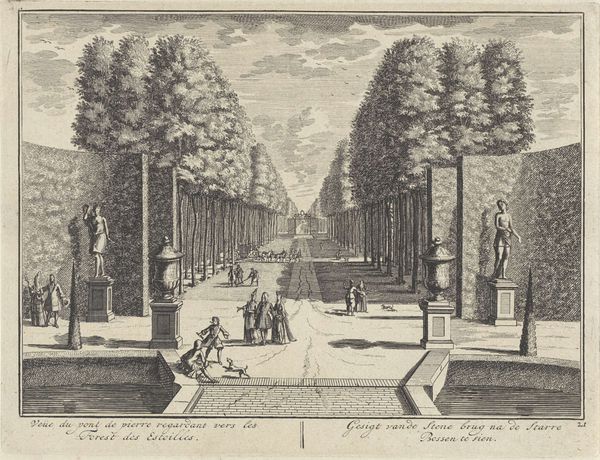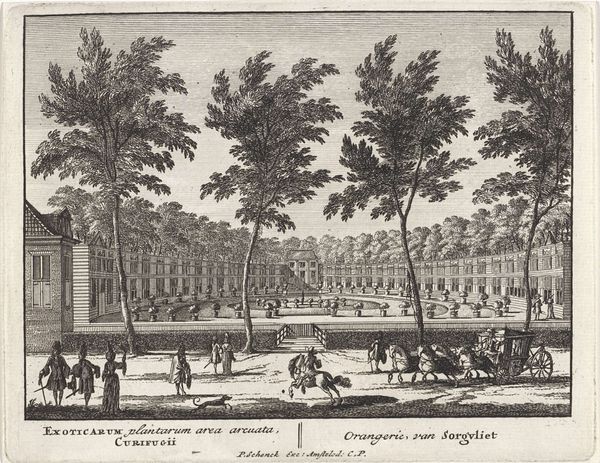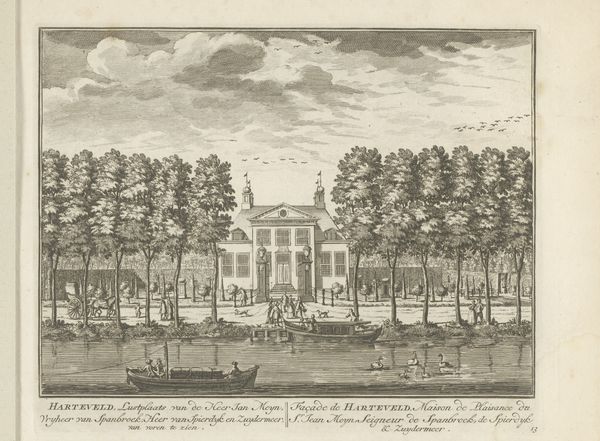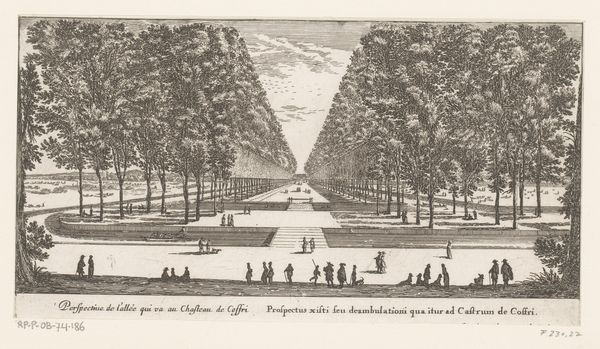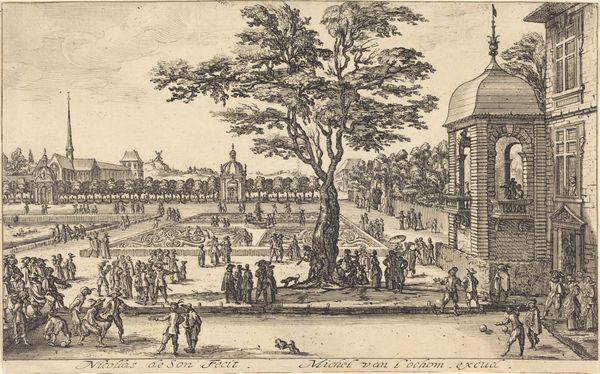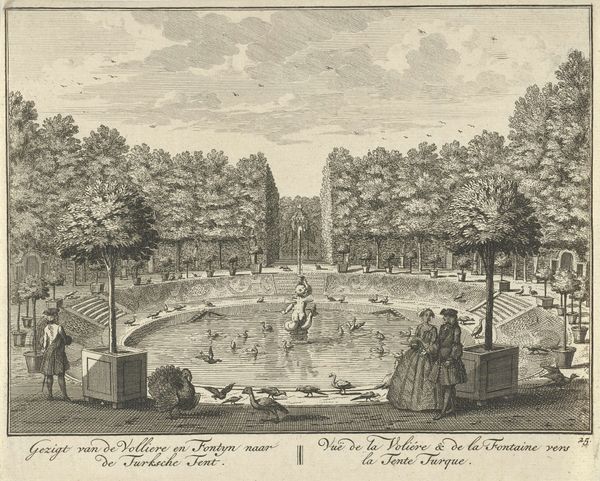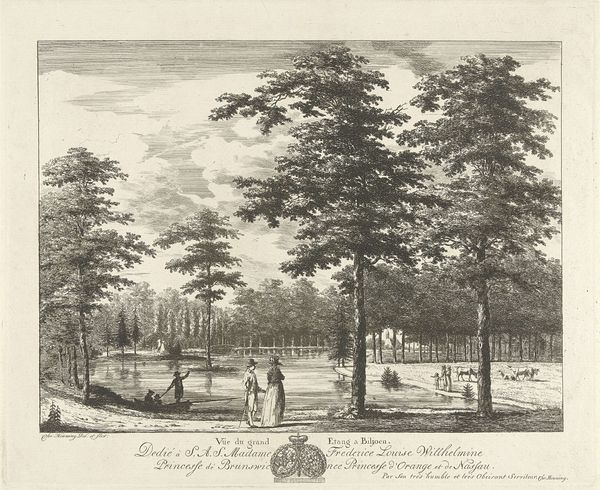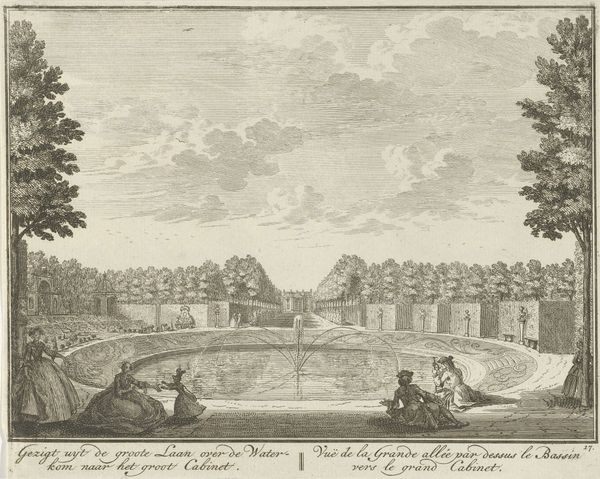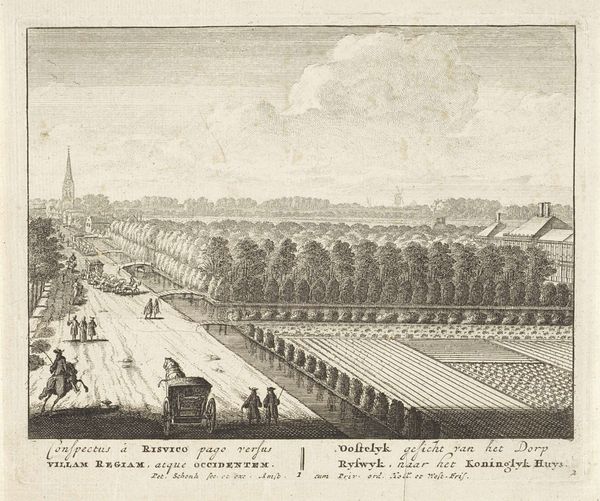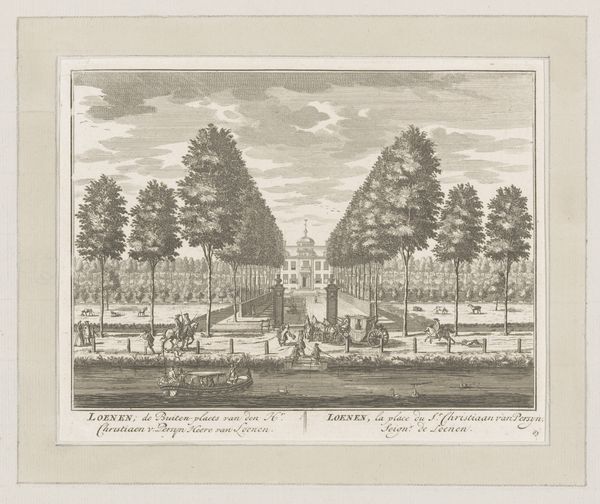
Dimensions: height 320 mm, width 440 mm
Copyright: Rijks Museum: Open Domain
Curator: Here we have Isaac van Haastert's etching, "Gezicht op het Buitenhof in Den Haag," created sometime between 1770 and 1790. What are your initial thoughts? Editor: Well, I’m immediately drawn to the contrast between the meticulously rendered architecture and the almost casual depiction of the figures populating the space. It speaks volumes about priorities. Curator: Indeed. This etching presents the Buitenhof as more than just a physical location; it is a symbolic representation of Dutch civic life, wouldn't you agree? Note how the symmetry draws your eye to the center. Editor: Symbolism is key, but so are the techniques used. As a print, the image is repeatable and therefore meant for circulation. Look closely at the way the etching emphasizes line and shadow; you can feel the physical labor involved in its creation, replicating a single image numerous times. Curator: Precisely, the repetitive act mirrors the values held by those commissioning these images. There's an established visual language here, drawing on a memory of order. And those seemingly 'casual' figures? They speak to the genre tradition of rendering cityscapes in a manner that almost flattens class distinctions and harmonizes all inhabitants. Editor: Perhaps, but who *benefits* from this flattening? The material reality is surely more complex. The printing process allowed for widespread access to idealized imagery and the illusion of egalitarianism—images carefully crafted for consumption by a particular class. Look at how precise lines form this public space and the implicit promise it offers. Curator: I see your point. Though idealized, the image offers a connection with place and belonging. There's also the suggestion of something idyllic...a sense of timeless continuity embedded within these pictorial traditions. The architecture signifies civic structure while the figures within the frame present it as a place for people. Editor: Yes, these materials speak not only of the place depicted, but also of labor, distribution, and the intended consumer. This particular etching leaves so many material and social breadcrumbs; it’s fascinating to untangle them. Curator: For me, its symbolic echoes make it a touchstone. The enduring presence of civic pride rings loud in these lines. Editor: And for me, the marks left on the printing plate act as historical markers of process. Every pull, every line, tells a story of labor and its careful commodification.
Comments
No comments
Be the first to comment and join the conversation on the ultimate creative platform.
